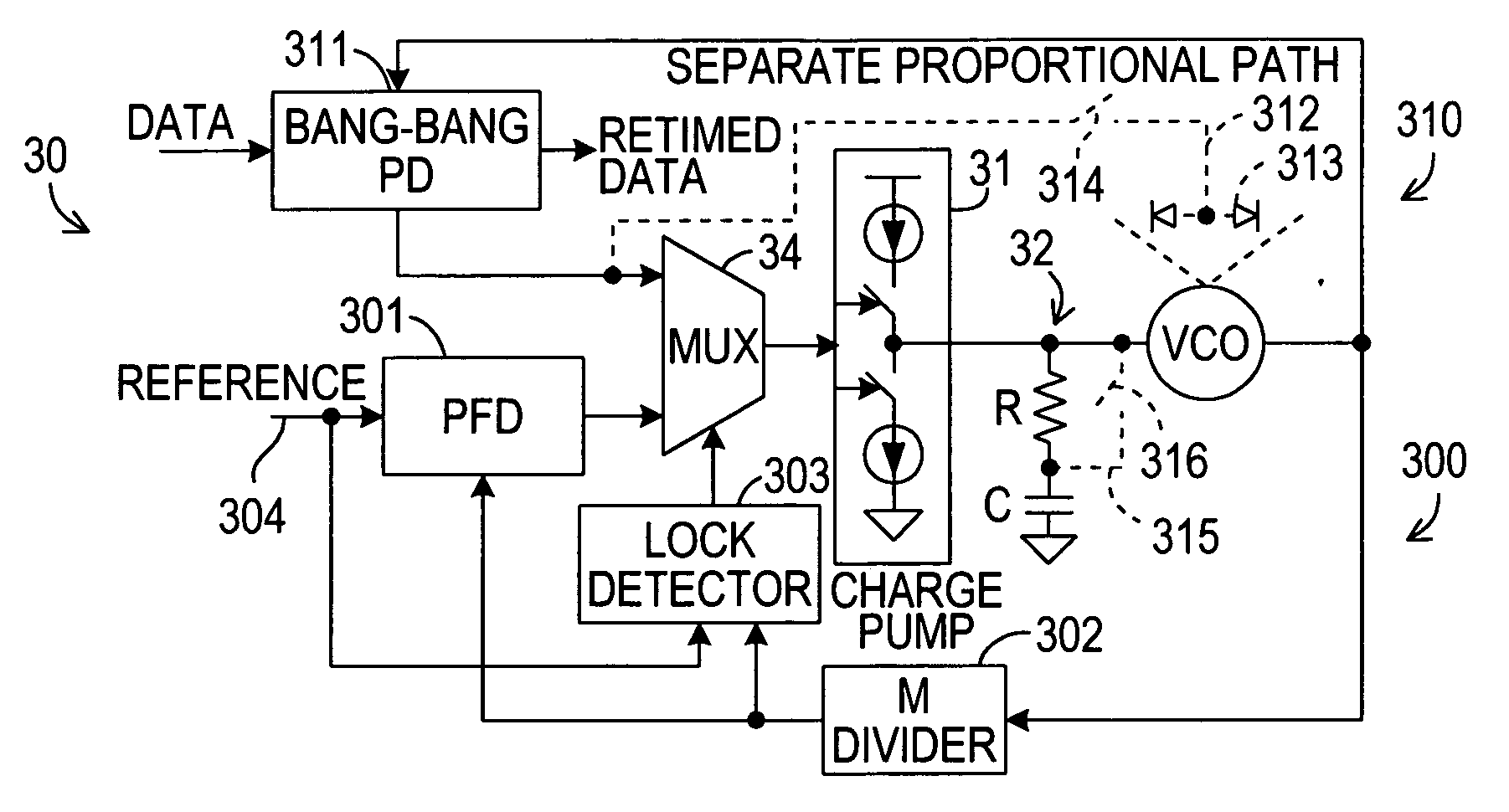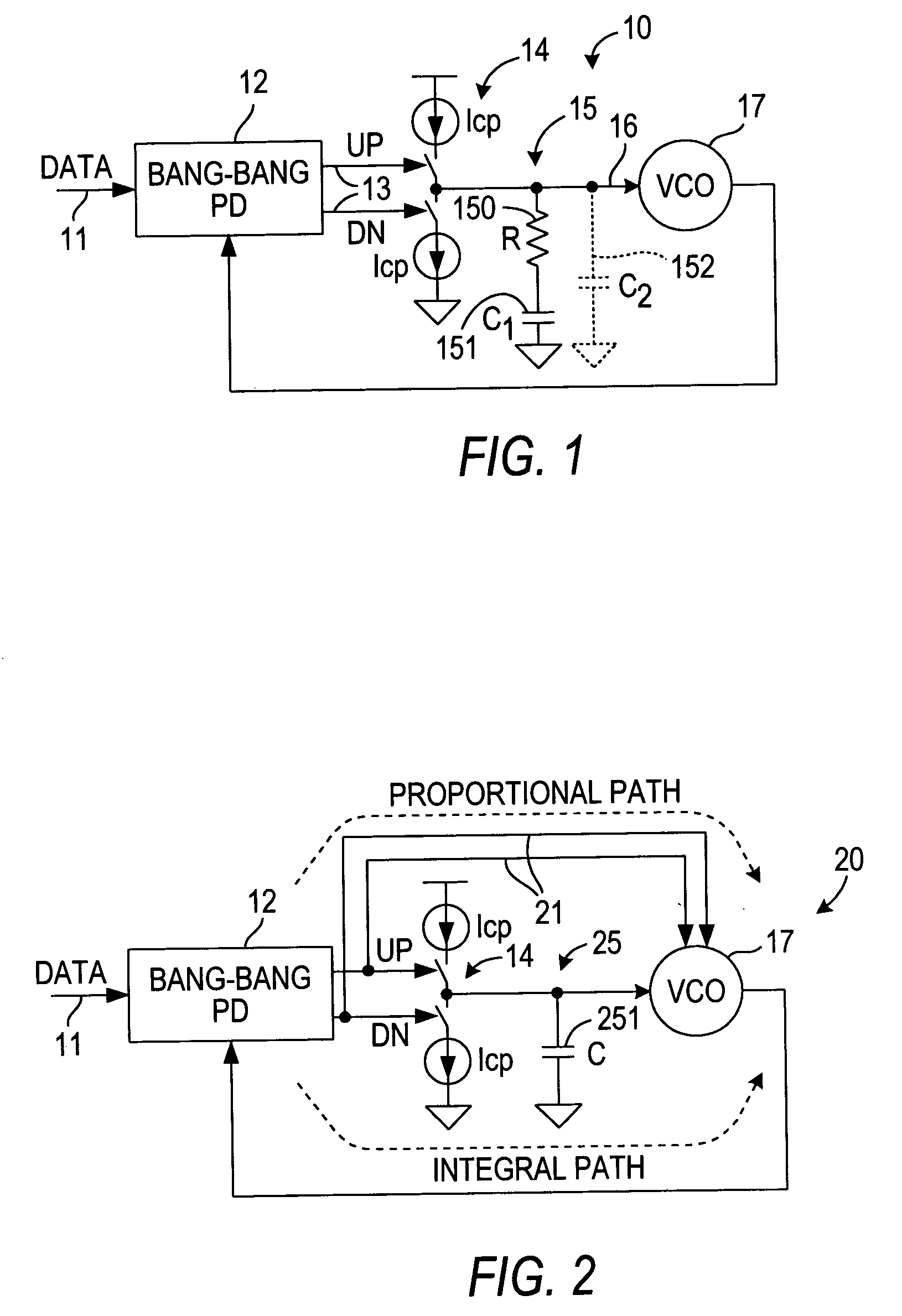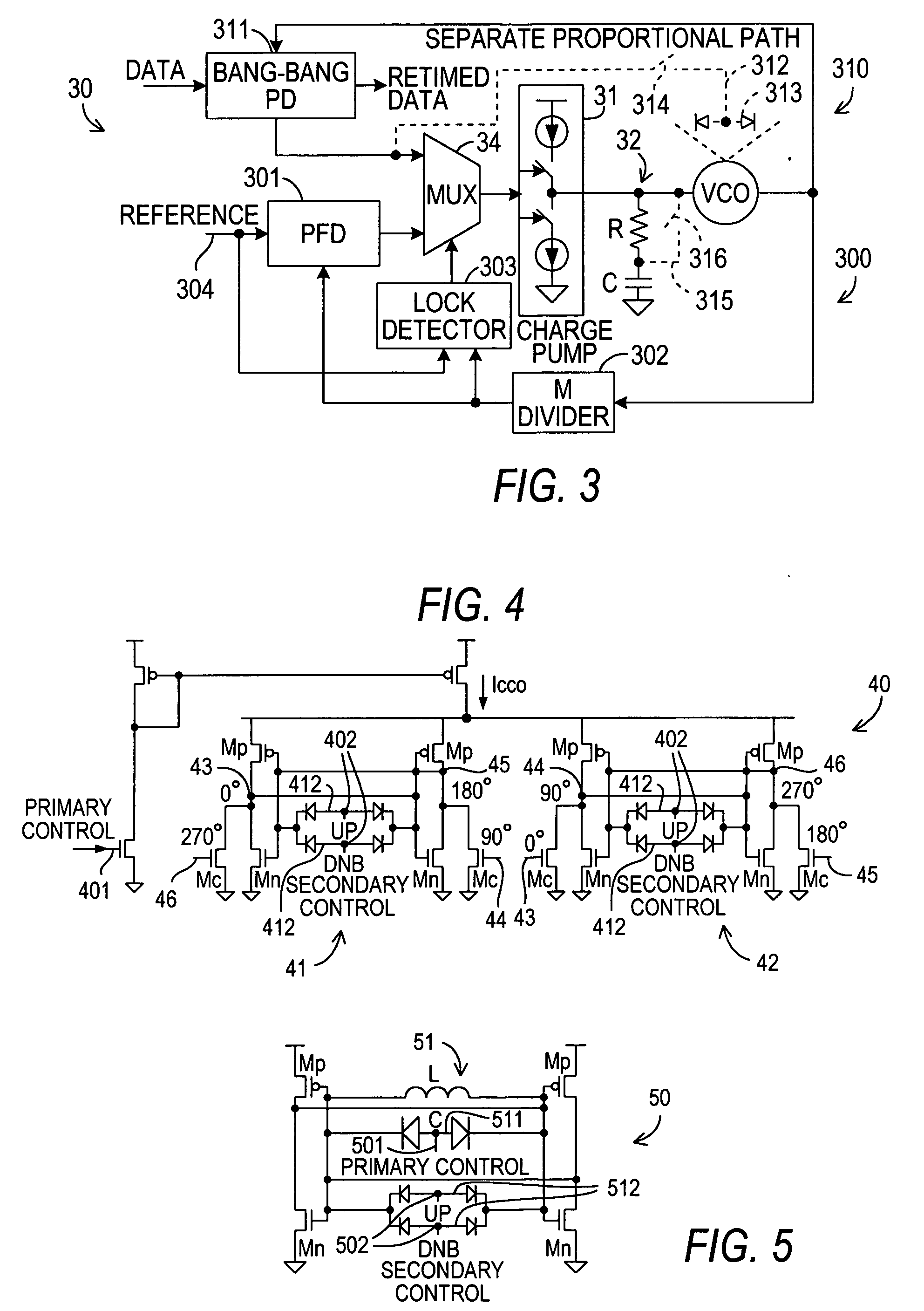Clock data recovery loop with separate proportional path
- Summary
- Abstract
- Description
- Claims
- Application Information
AI Technical Summary
Benefits of technology
Problems solved by technology
Method used
Image
Examples
exemplary embodiment 40
[0029]FIG. 4 shows a first exemplary embodiment 40 of a VCO 33 that can be used in loop circuits according to the present invention. VCO 40 preferably is a quadrature ring VCO preferably having two identical cross-coupled delay stages 41, 42. VCO 40 preferably provides quadrature phase clocks 43-46, and therefore preferably is suitable for half-rate Bang-Bang CDR applications.
[0030] VCO 40 preferably has two control inputs 401, 402. Control 401 preferably is the primary control, which preferably comes from loop filter 32. Control 402 preferably is the secondary control, which preferably comes from the Bang-Bang proportional path. Primary control 401 preferably determines the VCO tuning range while secondary control 402 (preferably including separate up and down signals UP and DNB) preferably determines the Bang-Bang step frequency fbb. Because fbb is on the order of 0.1% of the VCO center frequency as discussed above, the size of varactors 412 of secondary control 402 need be only l...
exemplary embodiment 50
[0031]FIG. 5 shows a second exemplary embodiment 50 of a VCO 33 that can be used in loop circuits according to the present invention. VCO 50 preferably is based on LC tank 51 with a larger varactor 511 proving the primary control 501 and smaller varactors 512 proving the secondary control 502. As shown, VCO 50 is designed for full-rate CDR operation. However, a quadrature LC VCO (not shown) for half-rate operation can be configured as two cross-coupled stages in a manner similar to that used in quadrature ring VCO 40.
[0032] A programmable logic device (“PLD”) 60 incorporating clock data recovery circuitry according to the present invention may be used in many kinds of electronic devices. One possible use is in a data processing system 900 shown in FIG. 6. Data processing system 900 may include one or more of the following components: a processor 901; memory 902; I / O circuitry 903; and peripheral devices 904. These components are coupled together by a system bus 905 and are populated...
PUM
 Login to View More
Login to View More Abstract
Description
Claims
Application Information
 Login to View More
Login to View More - R&D
- Intellectual Property
- Life Sciences
- Materials
- Tech Scout
- Unparalleled Data Quality
- Higher Quality Content
- 60% Fewer Hallucinations
Browse by: Latest US Patents, China's latest patents, Technical Efficacy Thesaurus, Application Domain, Technology Topic, Popular Technical Reports.
© 2025 PatSnap. All rights reserved.Legal|Privacy policy|Modern Slavery Act Transparency Statement|Sitemap|About US| Contact US: help@patsnap.com



